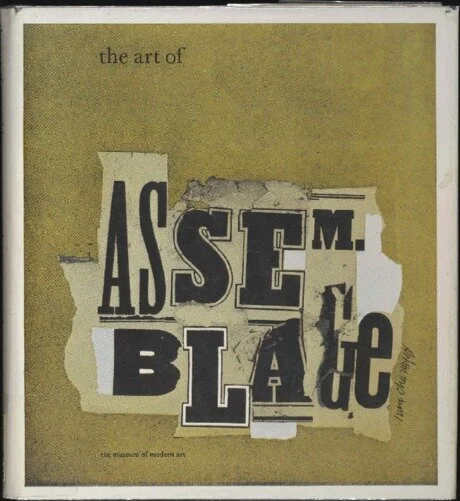Along with immediately recognizable works by Cornell, Rauschenberg, and Duchamp, the 1961 exhibit at MoMA The Art of Assemblage included many works that I wouldn't necessarily classify as assemblage – straightforward collages by everyone from Picasso to Conrad Marca-Relli, torn-paper pieces by Bill Getman and Mimmo Rotella, and Burri's burlap canvasses. I am fortunate enough to have access to a hard copy of the exhibition catalog, and it makes explicit that the term assemblage "was adopted for this book and exhibition out of necessity, as a generic concept that would include all forms of composite art and modes of juxtaposition." It's a catchall which, in my opinion, renders the term so malleable as to be nearly meaningless – an assemblage is anything made from anything else.
(The exhibit curators acknowledge they are working from Dubuffet's use of the term, which distinguishes between collage and assemblage based not on the materials used but the time period in which the work was created: collage should be, according to Dubuffet, reserved for those works "made in the period 1910–1920 by the Dadaists, Picasso and Braque, etc." This still proves unsatisfactory, as several works by the Dadaists, Picasso and Braque, etc., are included in this collection, under the term assemblage.)
There were a number of artists included in the show whose work I didn’t know but which requires more research – George Herms and Robert Mallary to name two. But the heart of the show – and not only because a whopping 35 of his works are included – is Kurt Schwitters, who perhaps supplies a bridge across the collage-assemblage divide as I see it. Below are a couple of images of the exhibit and catalog, along with several of Schwitters’s works held by MoMA, though I can’t say for sure they were in the 1969 exhibit.





